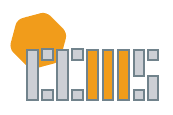Abstract / Synopsis
In this study, we examined the effect of different presentation formats of a realistic situation on students’ mathematical problem-posing behavior. We divided thirty-six middle school students into two groups, gave them a pretest, and then showed them a realistic, problem-posing situation in Artifact or Video format. We used Silver’s core dimensions of creativity, namely fluency, flexibility, and originality, to measure participants’ problem-posing activity. The results for the fluency measures showed that the Artifact group wrote more questions than the Video group but the same number of mathematics problems. The Video group posed problems in more mathematical domains than the Artifact group. Overall our results indicate that mathematics instructors should align the presentation format with goals of the problem-posing exercise.
DOI
10.5642/jhummath.202201.06
Recommended Citation
David Coffland & Ying Xie, "Middle School Students Generating Mathematical Problems from a Real-life Situation," Journal of Humanistic Mathematics, Volume 12 Issue 1 (January 2022), pages 76-97. DOI: 10.5642/jhummath.202201.06. Available at: https://scholarship.claremont.edu/jhm/vol12/iss1/6
Terms of Use & License Information
Included in
Arts and Humanities Commons, Educational Technology Commons, Mathematics Commons, Science and Mathematics Education Commons
